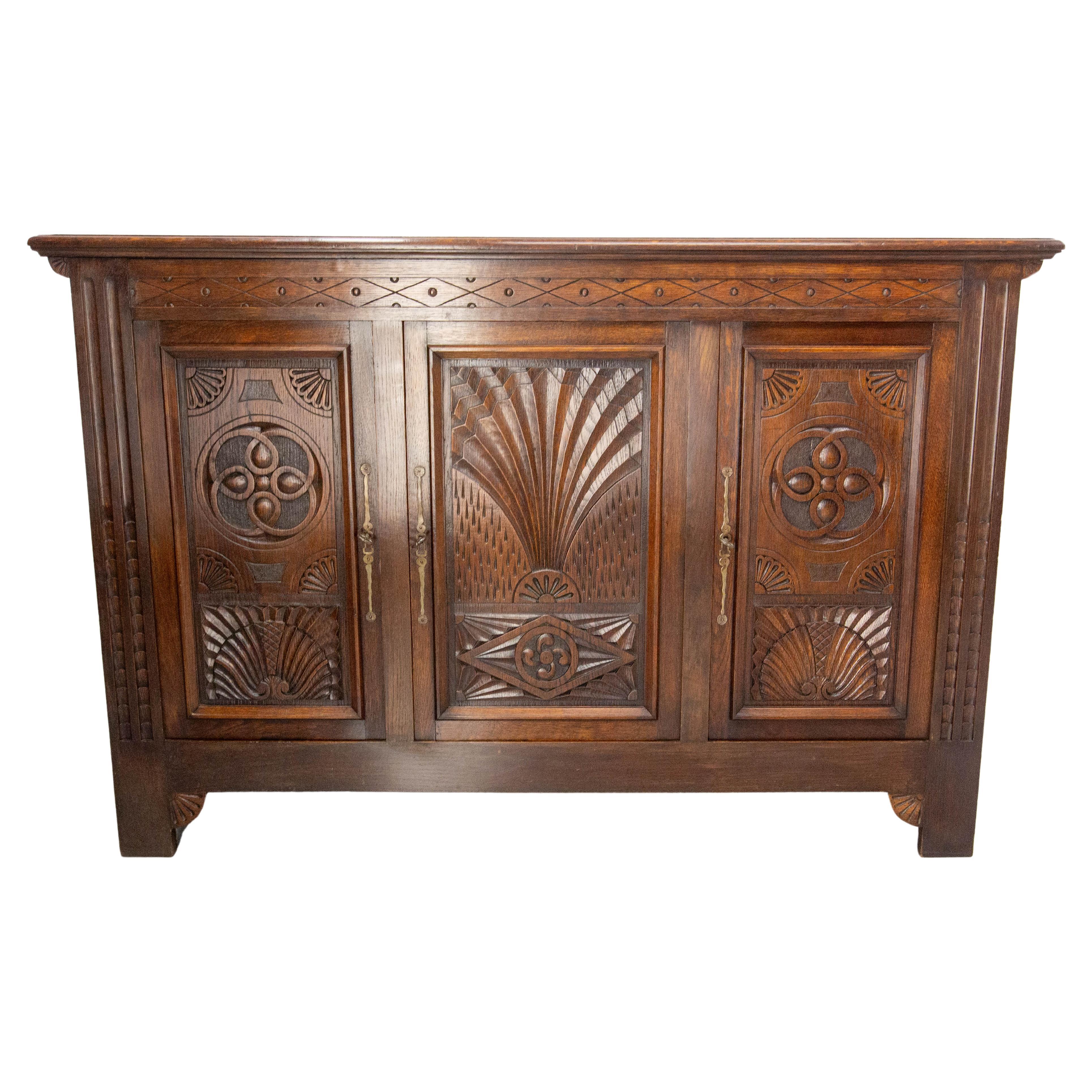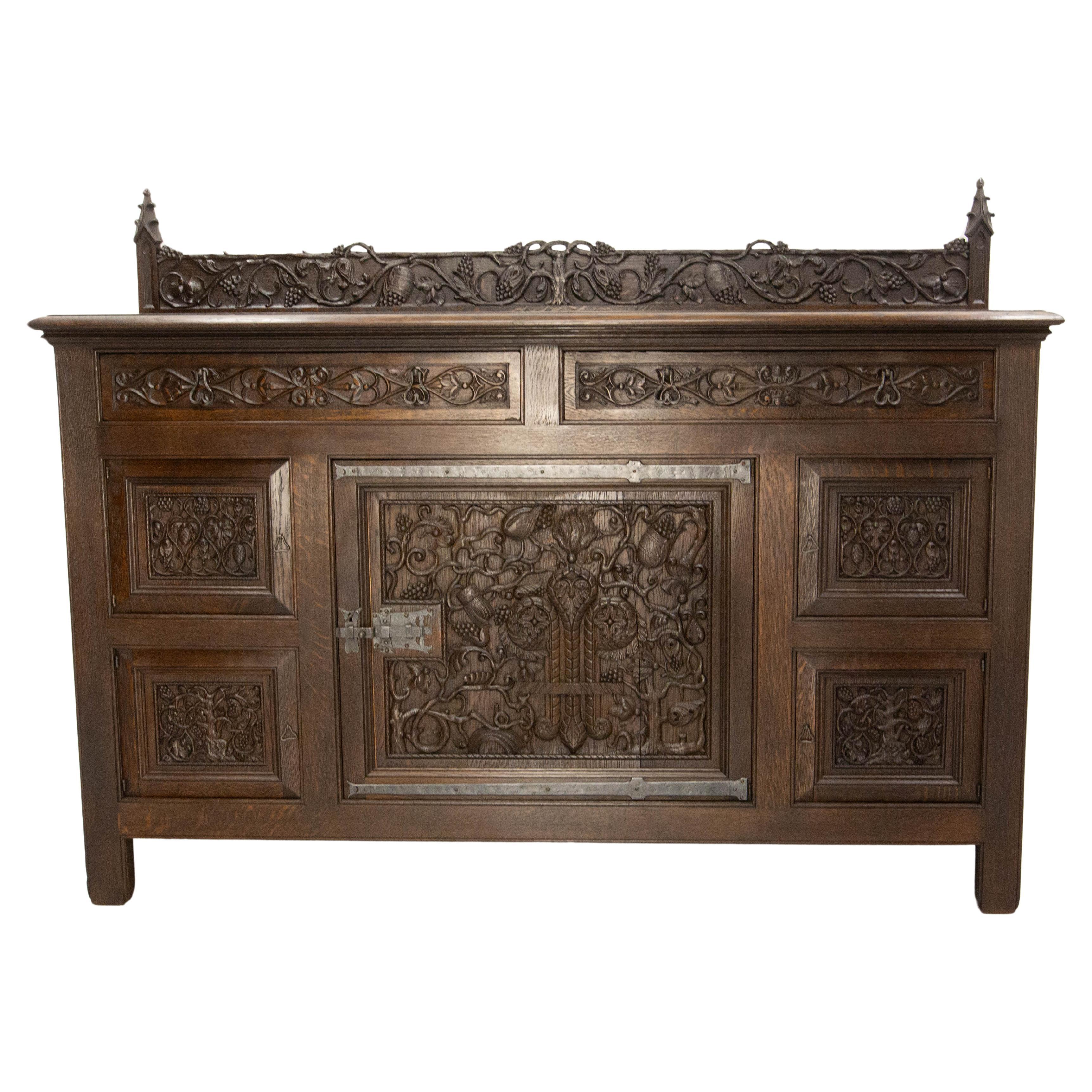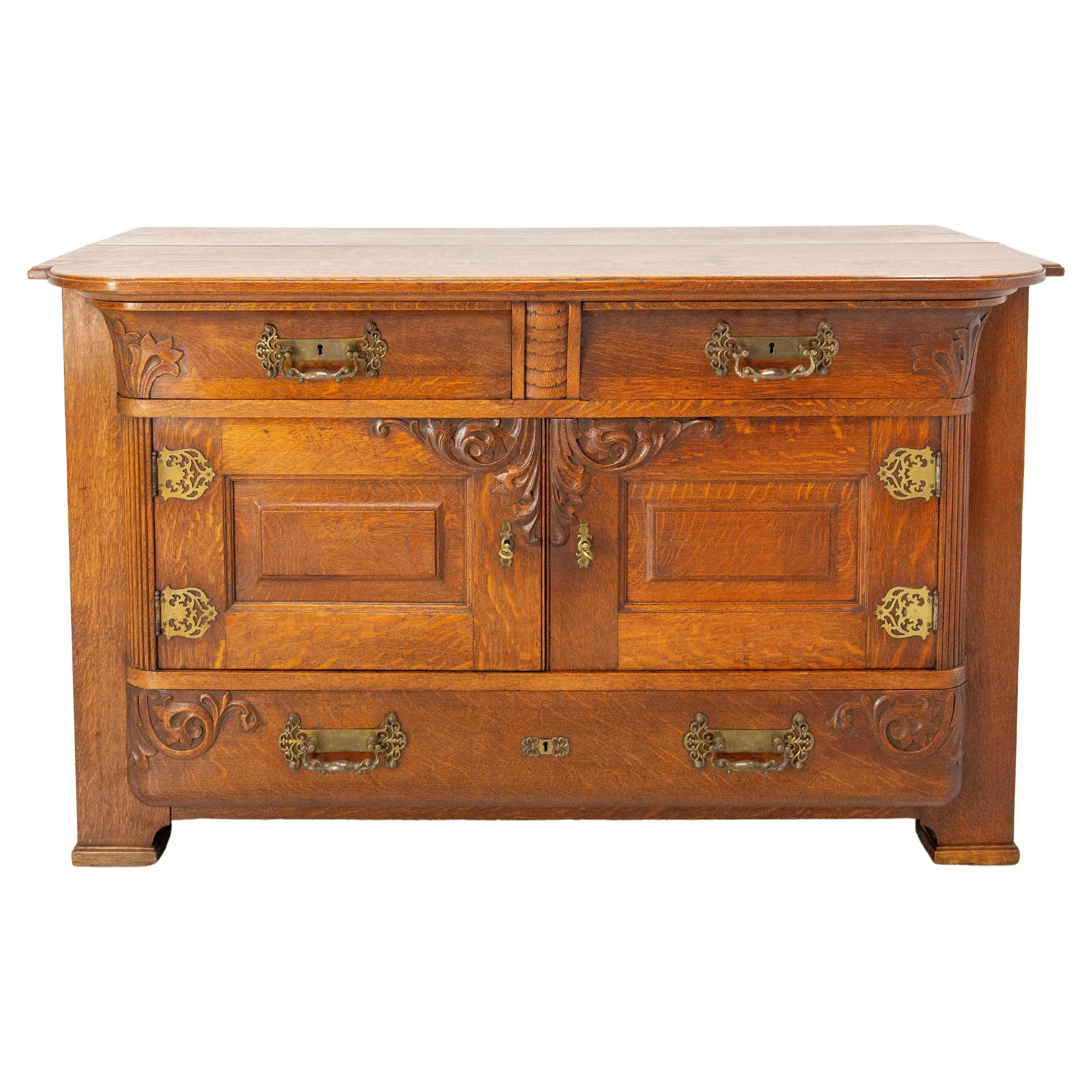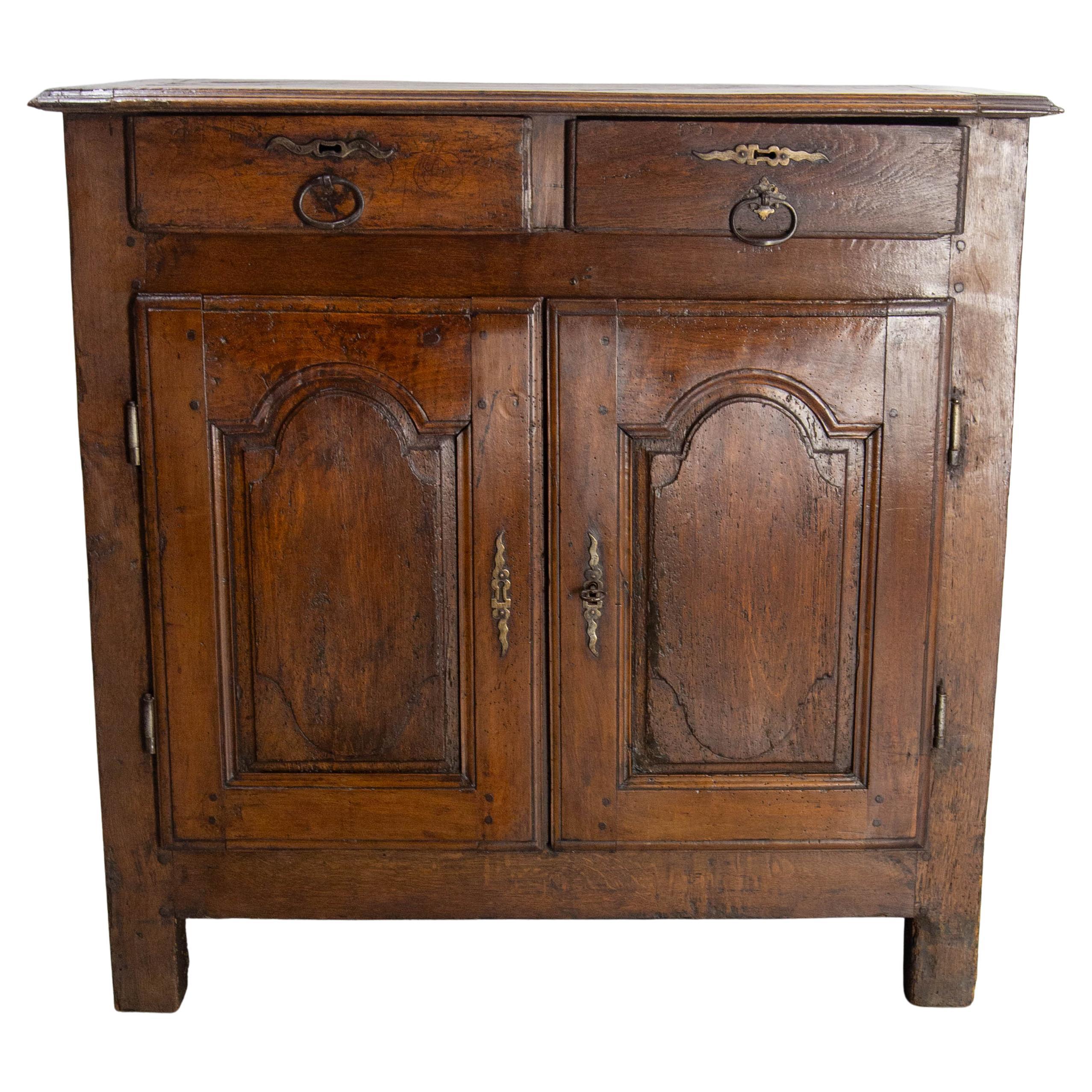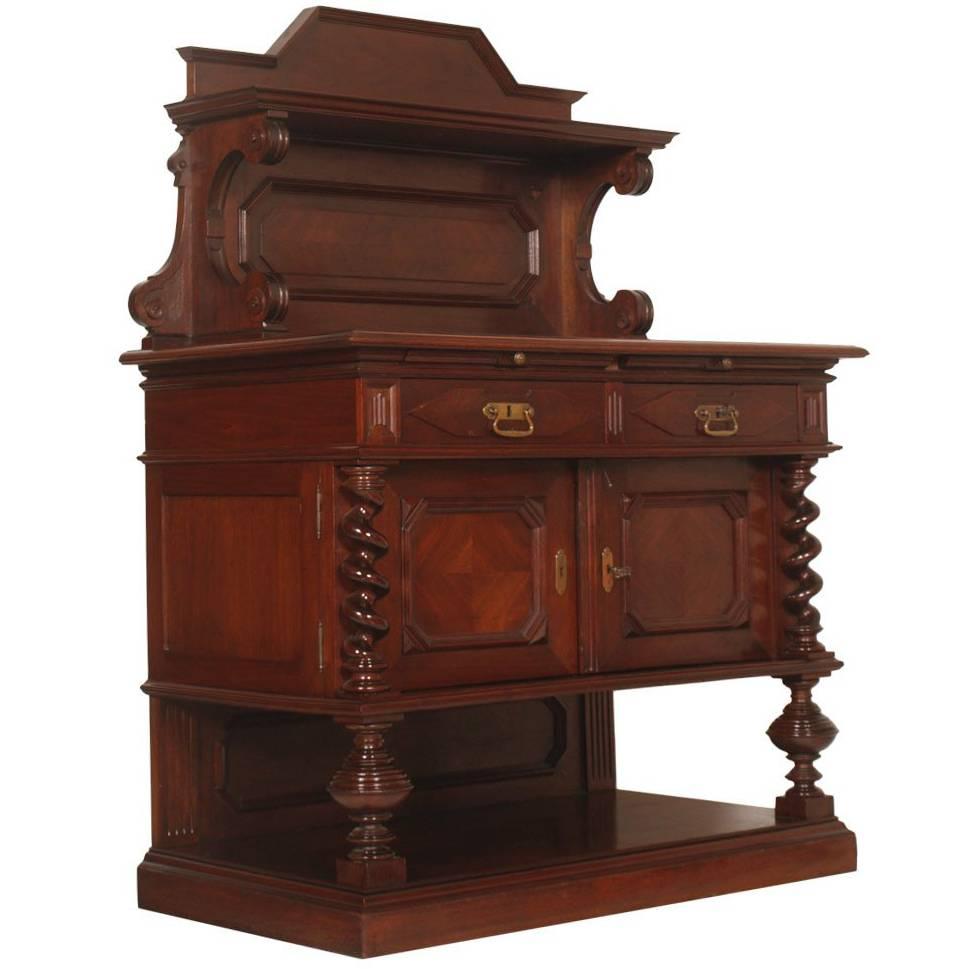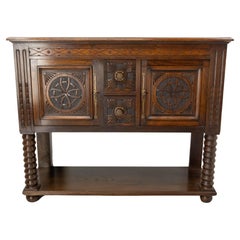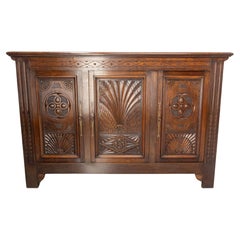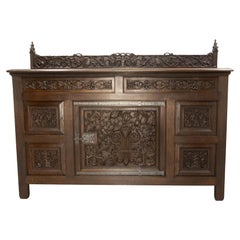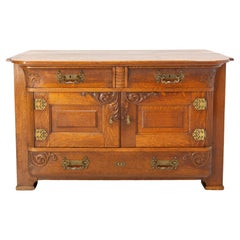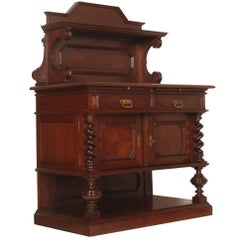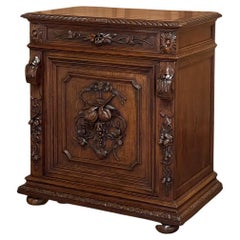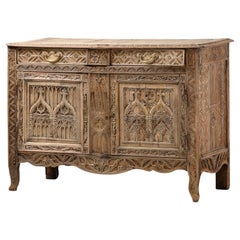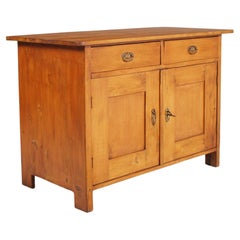Items Similar to French Chestnut & Wrought Iron Buffet Neogothic Style Late 19th Century
Want more images or videos?
Request additional images or videos from the seller
1 of 18
French Chestnut & Wrought Iron Buffet Neogothic Style Late 19th Century
About the Item
French chestnut sideboard buffet in the neogothic style.
Turned legs gothic and geometrical motifs.
One drawer and two doors, wrought iron handles and locksmith.
Good antique condition.
Shipping:
38 / 78 / 110 cm 24.2 kg
- Dimensions:Height: 43.31 in (110 cm)Width: 30.71 in (78 cm)Depth: 15.36 in (39 cm)
- Style:Gothic Revival (Of the Period)
- Materials and Techniques:
- Place of Origin:
- Period:
- Date of Manufacture:circa 1880-1890
- Condition:Wear consistent with age and use. Good antique condition.
- Seller Location:Labrit, FR
- Reference Number:1stDibs: LU4476240180422
About the Seller
4.9
Platinum Seller
Premium sellers with a 4.7+ rating and 24-hour response times
Established in 2006
1stDibs seller since 2019
660 sales on 1stDibs
Typical response time: 2 hours
- ShippingRetrieving quote...Shipping from: Labrit, France
- Return Policy
Authenticity Guarantee
In the unlikely event there’s an issue with an item’s authenticity, contact us within 1 year for a full refund. DetailsMoney-Back Guarantee
If your item is not as described, is damaged in transit, or does not arrive, contact us within 7 days for a full refund. Details24-Hour Cancellation
You have a 24-hour grace period in which to reconsider your purchase, with no questions asked.Vetted Professional Sellers
Our world-class sellers must adhere to strict standards for service and quality, maintaining the integrity of our listings.Price-Match Guarantee
If you find that a seller listed the same item for a lower price elsewhere, we’ll match it.Trusted Global Delivery
Our best-in-class carrier network provides specialized shipping options worldwide, including custom delivery.More From This Seller
View AllFrench Vintage Oak & Wrought Iron Buffet Neogothic Style Midcentury
Located in Labrit, Landes
French oak sideboard buffet in the neogothic style.
From South of France with colunms in the Dudouyt style and geometrical motifs.
Goes very well with Spanish style décor...
Category
Vintage 1960s French Gothic Revival Credenzas
Materials
Oak
French Vintage Oak & Wrought Iron Buffet Neogothic Style Basque Cross Midcentury
Located in Labrit, Landes
French oak sideboard buffet in the neogothic style.
From South of France Basque country (area near Spain).
Goes very well with Spanish style déc...
Category
Vintage 1960s French Gothic Revival Credenzas
Materials
Oak
French Oak & Wrought Iron Buffet Neogothic St Tree of Life Theme Early 20th C
Located in Labrit, Landes
French oak sideboard buffet in the neogothic style.
Adolphe de Beyne was a cabinetmaker from the North of France.
After the Word War I he ...
Category
Early 20th Century French Gothic Revival Credenzas
Materials
Wrought Iron
French Huge Oak & Bronze Buffet Neogothic Style Acanthus Leaves circa 1900
Located in Labrit, Landes
French oak sideboard buffet in the neogothic and Art Nouveau style
This furniture was made in the early 20th century. It was carved with ac...
Category
Early 20th Century French Gothic Revival Credenzas
Materials
Bronze
French Antique Oak & Wrought Iron Buffet Country Style 18th Century
Located in Labrit, Landes
French antique oak and wrought iron sideboard buffet.
Two doors and two drawers.
One shelf in the cabinet.
The interior of the buffet was entirely covered in Provencal-style fabric w...
Category
Antique 18th Century French French Provincial Credenzas
Materials
Wrought Iron
French Antique Oak & Iron Low Buffet Blue & White Patinated 18th Century
Located in Labrit, Landes
French antique oak and iron low buffet.
Two doors, one shelf in the cabinet.
The interior of the buffet was entirely painted in the same blue color of the exterior.
This sideboard is...
Category
Antique 18th Century French French Provincial Credenzas
Materials
Iron
You May Also Like
Italian Late 19th Century Buffet Credenza Sideboard Renaissance, in Chestnut
Located in Vigonza, Padua
Code: FR44
Antique Italian Renaissance cabinet in solid chestnut .
Top frame, molded with shelf, two pull-out shelves,
two drawers with original heavy brass handles, two doors and in...
Category
Antique Late 19th Century Italian Renaissance Revival Buffets
Materials
Chestnut
19th Century French Renaissance Confiturier ~ Cabinet
Located in Dallas, TX
19th Century French Renaissance Confiturier ~ cabinet displays an abundance of artful splendor in a relatively diminutive package! Rendered from old-growth indigenous oak, it feature...
Category
Antique 1870s French Renaissance Revival Cabinets
Materials
Oak
Gothic Revival Buffet in Carved Oak, France, Late 19th Century
Located in Kaštel Sućurac, Splitsko-dalmatinska županija
Gothic Revival Buffet in Carved Oak, France, Late 19th Century
A domestic cathedral carved in oak
A masterwork of French Gothic Revival design, this late 19th-century buffet transfo...
Category
Antique Late 19th Century French Gothic Revival Cabinets
Materials
Oak
Tyrolean Late 18th Century Credenza Sideboard Massive Chestnut Wood Wax Polished
Located in Vigonza, Padua
Exceptional charming antique Tyrolean handmade sideboard , in precious chestnut wood with gilded brass closing handles. The beauty and patina of this ...
Category
Antique Late 18th Century Austrian Country Credenzas
Materials
Chestnut
French 19th Century Napoleon III Period Cabinet
Located in Warsaw, PL
French bronze-mounted Ebonized and Pietra Dura cabinet
Empire style ormolu and Pietra dura cabinet from 19th c.
Napoleon III ormolu veneered ebony...
Category
Antique 19th Century French Napoleon III Cabinets
Materials
Marble, Bronze
French 19th Century Napoleon III Period Cabinet
Located in Warsaw, PL
A magnificent rectangular black 2-door cabinet in Napoleon III style. Large and small details are gilt, bringing antique and luxurious looks. Brass medallions are centrally mounted on each door and also adorn the upper facade of the cabinet. The inside of the cabinet is divided into three horizontal shelves. At the bottom of the cabinet, there is a figure of a woman's mask, decorated with floral motifs, notably acanthus leaves and it is completed on the side with a rich ornamentation of gilded bronzes caryatides. The borders running along the cabinet are all gilt and engraved with beautiful patterns. On the two cabinet doors, there are two big figures encased in an oval border, representing Apollo, the god of music, and Hermes, the messenger of the gods.
Both are the son of Zeus, and they are also frequently present in mythological tales about the other. When Hermes was just a toddler, he once left his cradle to steal the cattle of his half-brother Apollo. Apollo soon discovered that his flock was missing and began to search the surrounding area. Of course, Apollo was the god of prophecy, so he soon found out about the thief and furiously went to Mount Cyllene to find Hermes in his cave. He grabbed the infant and took him to Mount Olympus, to be judged by their master Zeus, the king of the gods. In front of Zeus, Hermes initially denied everything, but in the end, he had to confess. Zeus found the story quite amusing, so he did not punish Hermes, but only required him to return the flock. Hermes regretted what he had done and offered Apollo his lyre as a gift. The lyre was a musical instrument that Hermes had created all by himself from the shell of a turtle. To repay Hermes for his kindness, Apollo returned the gesture by giving Hermes a golden staff...
Category
Antique 19th Century French Napoleon III Cabinets
Materials
Marble, Bronze
Recently Viewed
View AllMore Ways To Browse
78 Style
Antique Iron Handles
Antique Chestnut
Antique Sideboard Buffet Credenza
Antique Locksmith
Antique Furniture Locksmith
Gothic Door Handle
Neogothic Cabinet
Milo Credenza Lucite
Pace Burlwood And Stainless
Paul Evans Patchwork Burl Credenza
Paul Mccobb Book Case
Pierre Cardin Olive
Roger Sprunger For Dunbar Credenza
Royere Credenza
Tessellated Stone Rounded Credenza
Used Radiogram
Usm Haller Green

